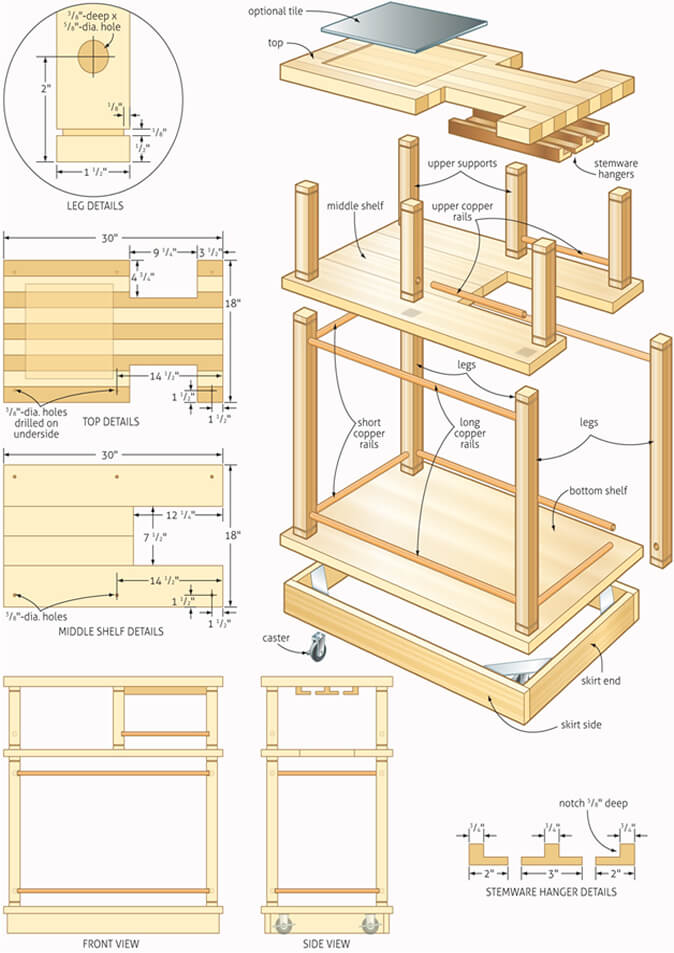If your toilet doesn’t stop running when you flush, you have a problem. You could opt for the easy route and call in a professional, but that would mean spending big bucks. There are cheaper ways to fix the problem. All you have to do is roll up your sleeves and get stuck in.
But where do you start? Let’s take a look at how to stop a running toilet and the things that might cause the issue in the first place.
How Are Toilets Supposed to Work?
Toilets are pretty simple, really. When you pull the flush handle, a chain lifts a valve called a flapper to let water flow into your toilet bowl. As the bowl fills, gravity takes over and drains the water down a pipe called an S-bend.
The water flows into the sewer carrying the waste material with it. Inside the water tank are a float valve and a refill tube. When the water in the tank drains into the bowl, the refill valve starts to draw water back into the tank.
As it fills, the float valve rises, and when it reaches optimum levels, the refill valve stops.
Reasons Your Toilet Won’t Stop Running
There are many reasons why your toilet won’t stop running, and the good news is most of them are simple fixes, requiring limited plumbing skills. Let’s take a look at the usual suspects.
Faulty Refilling Tubes
The refill valve does what it says on the tin; it refills your toilet tank, ready for the next time you flush it. It suffers wear and tear with repeated use, and eventually, it fails.
One of the most significant malfunctions is the valve becomes misaligned, causing the water to keep flowing into the tank. This excess water needs to run somewhere, and it makes its way into your toilet bowl.
It could also be a broken component inside the valve. The valves are made of plastic, so they are prone to becoming brittle as they chalk up with sediment.
Refill tubes are easy to replace. They screw into the base of the tank and connect directly with the water supply pipe. They can be bought as a single replacement part or as a complete toilet tank kit.
Faulty or Wrongly Placed Float Ball
The ball float prevents backflow and regulates the water levels within your flush tank. If the float is faulty, it could be a reason why the toilet won’t stop running. Check the float itself is not split.
Sometimes, when floats age, they split and let in water. If that happens, the float no longer functions, which causes the water to keep flowing. The simple solution is to buy a new float. They are readily available in hardware stores and easy to replace.
The other issue could be the arm that holds the float needs adjusting. Use a screwdriver to adjust the height by turning the screw clockwise or counterclockwise to lift it up or down.
Sometimes the arm gets bent. To solve this, a bit of brute force helps to bend the arm back into position.
Flush Valve Chain Is Too Short or Long
The flush valve chain attaches from the flush arm to the flapper at the base of the tank. When the chain is too short, the flapper stays open, allowing water to run into the toilet bowl continuously.
When the chain is too long, the flush doesn’t work because when you pull the lever, the flapper doesn’t lift to let the water escape.
Bad Flush Valve
The flush valve is also known as the flapper. Other than the chain being too short or long, which affects how well they operate, the valve itself can develop problems.
The flapper is made from dense rubber, which ages over time and becomes brittle. It causes the seal to weaken between the valve and the gasket.
One of the biggest signs your flapper is bad is the continuous flow of water into the toilet bowl. Another sign is ghost flushing, where the toilet appears to flush itself. This is due to water levels in the tank activating the refill valve and the toilet flushes.
Like all the other issues discussed so far, replacing a flapper is a relatively simple task and one that requires minimum plumbing know-how.
Weak Gasket
The gasket is made of rubber, just like the flapper. It sits at the base of the water tank, making a secure seal with the flapper valve. The same issues that beset the flapper can cause the gasket to fail.
They become brittle, develop splits and cracks, and eventually, fail completely, causing your toilet to run continuously.
Replacing a toilet gasket is cheap and easy to do. When you swap the flapper or perform any maintenance work that involves draining the flush tank, give everything a once over to make sure that there aren’t further problems down the line.
This includes inspecting the state of the gasket. It’s such a simple component and yet is vital to the effective performance of your toilet.
How to Stop a Running Toilet: 6 Fixes
So, we’ve looked at the causes of why your toilet keeps running, but what are the solutions? Let’s find out.
Tools & Materials Needed
Before you get stuck in, have the right tools to hand. Here’s what you will need:
- Screwdriver
- Adjustable wrench
- Plumber’s putty
- Dry towel
- Rubber gloves
- Replacement parts like new filler valve, flapper and gasket
1. Take a closer look at the fill tube
The first step is to drain the water tank. You can’t inspect the refill tube if there is still water inside the tank. Isolate the water supply by turning the valve as far as it will go. You can find the valve behind the toilet to the left.
If no isolation valve is present, you might need to turn the water off at the mains.
Now the water is switched off, flush the toilet and allow the tank to drain. Check the seals at the base of the filler tube to see that nothing is misaligned and leaking. Filler tubes are sealed units and come as one complete component.
So, while you inspect it for faults, if you suspect it is the culprit, buy a new one and replace it. It is a simple enough task because the tube screws into the tank’s base and connects directly with the water pipe.
Put on your rubber gloves for extra grip, and grab the adjustable wrench. Remove the water pipe that connects to the filler tube and then unscrew the tube from the tank. Put the new one in place, and while holding the filler tube steady, reconnect the pipework.
Don’t let the filler tube spin as you tighten the connecting nut of the water valve, and to get the best watertight seal, apply a generous coating of plumber’s putty to the threads before you tighten.
2. Set the fill height by examining the float
Your water level should be 1 or 2 inches below the overflow and refill tubes. Some toilet tanks have an indented marker that tells you the optimum levels.
You can perform this adjustment with the water tank full or empty. But if you suspect the ball is split, it might be better to do it in dry conditions.
Look at where the ball valve sits when the tank is full. To raise it up or down, grab the screwdriver and turn the screw clockwise or counterclockwise. When you are satisfied that the water level matches the marker on the tank, replace the tank lid.
If the float is split, replace it because it will fail to operate, and as the tank fills with water, it will no longer float, causing your toilet to run continuously.
3. Set the handle and chain of the toilet
This is another repair you can perform with the tank full. Lift the tank lid and place it to one side. Inspect the chain that connects the flush arm to the flapper at the base of the tank. If it is too slack, it affects the flush mechanism. Too tight, and the flapper won’t close.
Set the flush handle to its normal non-flushing position. Now unclip the chain from the arm inside the tank and remove the necessary amount of links from the chain. The chain is designed with small openings that allow for easy link removal.
Hold the chain up, so it is straight and measure the length against the height of the flush arm. The chain should be taught but with enough slack that it still moves freely.
Grab a paperclip, straighten it out and hook it through the last link in the chain, feeding the other end through the hole in the flush arm. Now twist the paperclip shut, ensuring it is secure.
Test the flush and see how the flapper operates. Wait while the tank refills and listen for running water. If the flapper closes and creates a seal. You have succeeded.
4. Repair the bent lift arm
Don your rubber gloves and grip the lift arm with both hands, applying gentle but firm pressure, twist the arm, so it looks straight.
It should be possible to achieve this with a bit of brute force; however, if it is more stubborn, you may need to remove the arm and apply a little more pressure.
When you are happy the arm is straight, flush the toilet and see if the float sits at the correct level. If not, keep making adjustments until you are satisfied. Now replace the lid.
5. Replace the flapper
As before, with the water isolated, flush the toilet and let the water drain away. Use the dry towel to mop up any remaining puddles of water from the base of the tank.
Unclip the chain from the flapper and remove the pegs that attach to the overflow valve. Now disconnect the chain and slide the edges away from the pegs. Lift the flapper free and replace it with the new one.
Luckily, most flappers are universal, but if you want the best fit, try and get like for like. Assuming your new flapper is the same as the old one, sit it into the drain hole and examine how it fits.
Check for gaps, bits of sediment that might break the seal. If you are satisfied, reconnect the flapper to the overflow valve with the pegs and reattach the chain. Switch the water back on and allow the tank to fill. A test flush will tell you if the replacement works.
6. Adjust the flush handle
The flush handle works loose over time, and this affects the level of the lever. It causes the chain attached to the flapper to go slack. The first thing is to check how the lever sits against the toilet. Can you move the handle? Is it wobbly?
Reach inside and feel for the locking nut that secures the handle to the tank. If it is loose, tighten it by hand and check the handle is secure and doesn’t move.
Grab the adjustable wrench and gently tighten the nut, making sure not to overtighten in case you crack the ceramic tank. Check that the flush handle is set at the correct position and the chain is taught but not overstretched.
Pull the flush handle and let the toilet run through a flush cycle. If the tank refills and the handle returns to the correct position, you have succeeded.
Save Some Cash and Do It Yourself
Why bother calling in a professional when all these issues are fixable with a little know-how and our easy-to-follow guide. You can purchase most of the spares from hardware and DIY stores.
They are relatively cheap and easy to replace. You just need to set aside the time to perform the repairs, but you will feel the satisfaction of doing it yourself and saving money.

